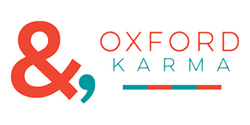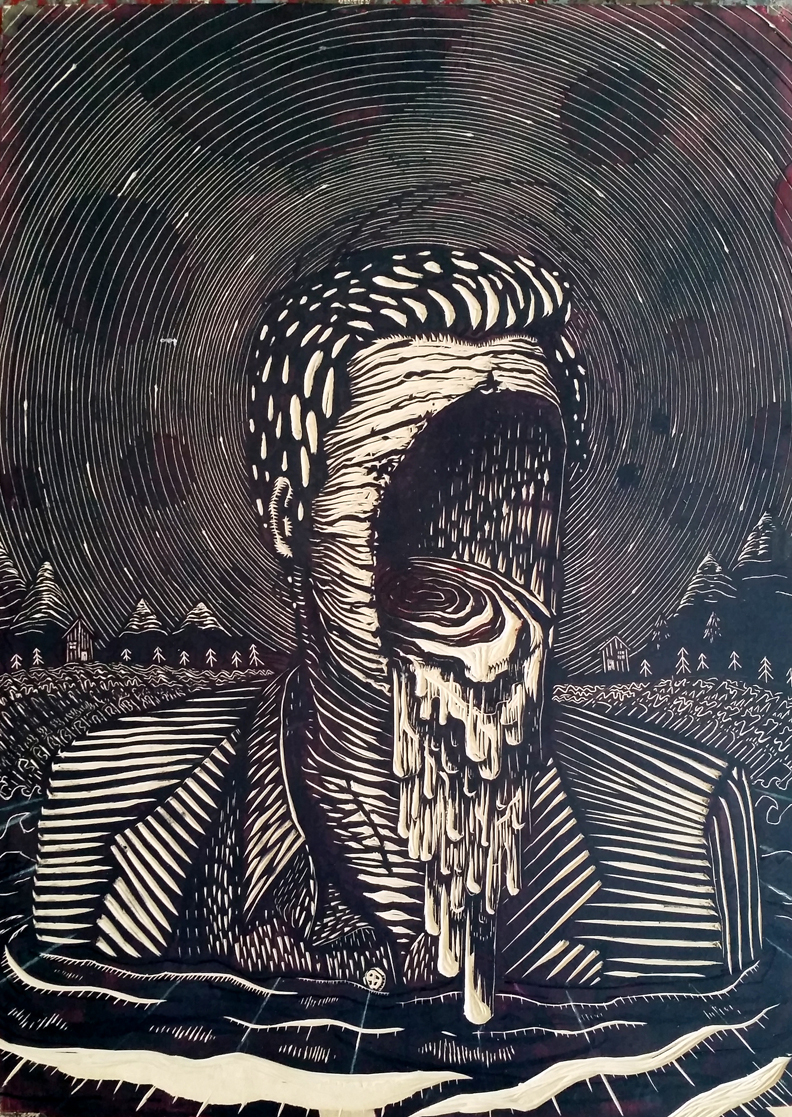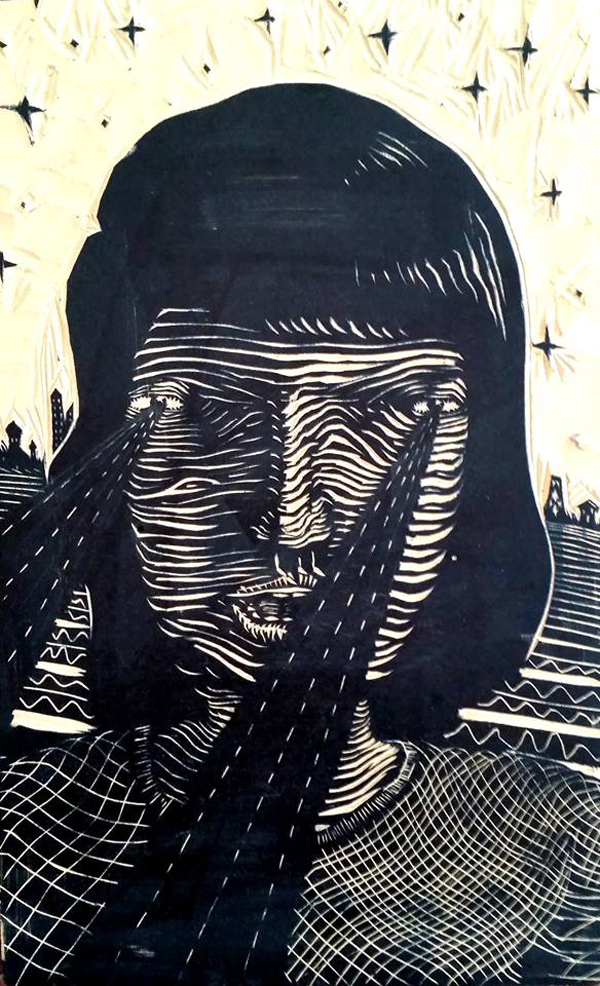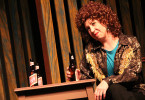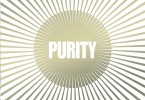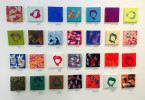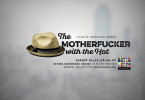Dope Chapel, the humble DIY art space and venue founded and operated by Eric Piper, is bringing international culture to a place often starved for something a little different. Piper runs the hub for weirdos and misfits with a gaggle of volunteers — paint-stained art school grads, altruistic punks and hungry curators of all things challenging and mind expanding — and most point to him as the central figure in it all.
But first and foremost, he’s an artist, one as eager to put the spotlight on others as on himself. We, A Lens to the Eternal allows him the chance to step in there for a bit. It’s a collaborative exhibition with protege Danny Gonzalez, one that will travel across international borders in the months to come, and premiered last Friday at the space he calls his home, office and studio. Piper shared his thoughts on his new work and what Dope Chapel represents to not only Norman but Oklahoma at large, chatting about the struggle to connect, broken ankles and the battle against ignorance.
Oxford Karma: I know this work is what you’ve created over the course of the last year. What do you think it represents in regard to your overall body of work? Are there distinctions within it that you see, or is it just a steady, natural extension of what you have been doing?
Eric Piper: The main difference was in the method of creating the work. The show was planned at a 1:24 miniature model and edited from a big picture perspective before any of the individual pieces were being worked on. It’s been my first time creating with a final show in mind throughout the process. This is also the longest I’ve been grounded in the printmaking/woodcarving medium allowing me to play more with technique/craft-skill in these pieces than I could have in the past. Conceptually, I’ve been dealing a lot with where I fit into society. Who I am to myself and how other people see me. What constitutes human value and how to define these things when everyone appreciates things differently, oppositely often times. That struggle to find a symbiotic relationship with my peers and environment. I think these themes have floated around other work, this body of work seemed to naturally focus there though.
OK: What sort of headspace do you feel you’ve been in creating this work?
Piper: Headspace has been struggling to find my place. Headspace has been ignoring cynics. Headspace has been embracing passion. Headspace has been learning. Headspace has been teaching. Headspace has been trying to show people that they have worth. Headspace has been learning my own worth. Headspace has been learning to work with people with different views for a greater good. Headspace has been teaching others to value things that make them better people. Headspace has been Marcus Aurelius, Maurice Blanchot, Debord, Deleuze. The present mindset has had much more sense of duty … more focus on sharing the work and ideas as a whole.
OK: Is there a central theme you find driving this work? Or even separate threads of thought that you are exploring here?
Piper: The feeling that there’s no place for you as a person, and the struggle to find a way to work and find mutual respect with a society were driving often. Most all my work begins with extensive journaling. Analyzing my behavior and the behavior of others; looking at the actions and wants (of myself and others) and exploring the consequences that occur. The cornerstone of most of my work begins with posing metaphorical scenarios to try and better understand myself and the world around me. These hypothetical situations and metaphorical actor/actresses are then transformed into sculptures, actions, found objects or illustrations. The finished pieces are then arranged to create a full exhibition that interacts with itself and the audience in hopes to bring up questions and a desire to understand in the viewers.
Identity, finding a place in your world where you are working alongside others to better the big picture. Seeing our connection to each other, even the people we may not agree with.
OK: What does the title We, A Lens to the Eternal represent to you?
Piper: I see each of us as a lens of sorts. We interact with the same physical reality — the eternal — but refract these experiences differently. The more we learn to see from other perspectives, the better we can put together a much more accurate big-picture view. That big-picture view is absolutely necessary to learn to work together towards a future that doesn’t suck.
OK: There’s a little bit of every form of art here: printmaking, new media, sculpture, performance, paintings and even zines. How vital is it to you to not only be creating all the time but be creating in different forms using different methods?
Piper: Showing and viewing art is a delicate conversation. I think good conversation lacks total certainty, and in that allows for adaptation and growth. Good conversation isn’t someone dictating you new information; it’s a struggle to connect, within which misunderstandings can productively bring both parties to new ideas and excitement. When we’re communicating, we start with an array of thoughts that must be curated into “words to say aloud.” From there, we put together sentences.
I think the variety of media gives a more complete experience of the concepts, one that engages all senses and breaks social scripts that distract us instead of focus our attention. While concept is key, it is also often blurry and out of focus when beginning a new body of work. By working in all these different mediums it forces the concept to come through. I think it parallels with science: I start with a hypothesis and begin doing research, experiments, creating work, then look back through and find what overlaps.
OK: This is the first show of a promised two-month, international tour. Where are you planning to take this exhibit?
Piper: In short, the tour will loop through the central U.S., heading to Texas, flying to Europe for four weeks of touring with Diverse Universe then back to tour home, hitting locations on the way back from New York. There’s a second installment in the works for the West Coast and Mexico this fall.
The tour, codenamed, HELIOS CIRCUIT, is an 8-week tour that travels across 24 states and seven different countries. We’ve already confirmed 33 collaborating artists and a variety of show locations from street art interventions to house openings, DIY Venues to white wall gallery performances and exhibitions. We will be working with local artists and organizers to set up a show to maximize interaction between local and traveling artists. We also will be networking with artists we meet to set up shows and residencies back at Dope Chapel in Oklahoma. Along with presenting their own high quality artwork, participating artists work together to run workshops, seminars, collaborative performances, and discussions. These activities are organized with both young local artists and professional organizations. We plan hangouts and meetings to connect the local, regional and global to one another. These activities allow the participants to share experience, ideas, concepts, and art. This cross-fertilization of culture pushes us to create more effective, more exciting, and more meaningful artwork to share with the world.
Overseas, we’ll be teaming up with the project that inspired our tour, Diverse Universe, a nomadic performance festival that is in its 11th edition. Diverse Universe 2015 will involve over 200 artists over eight weeks, physically linking 25 European cities across 14 countries and attracting a combined audience of over 15,000 people.
